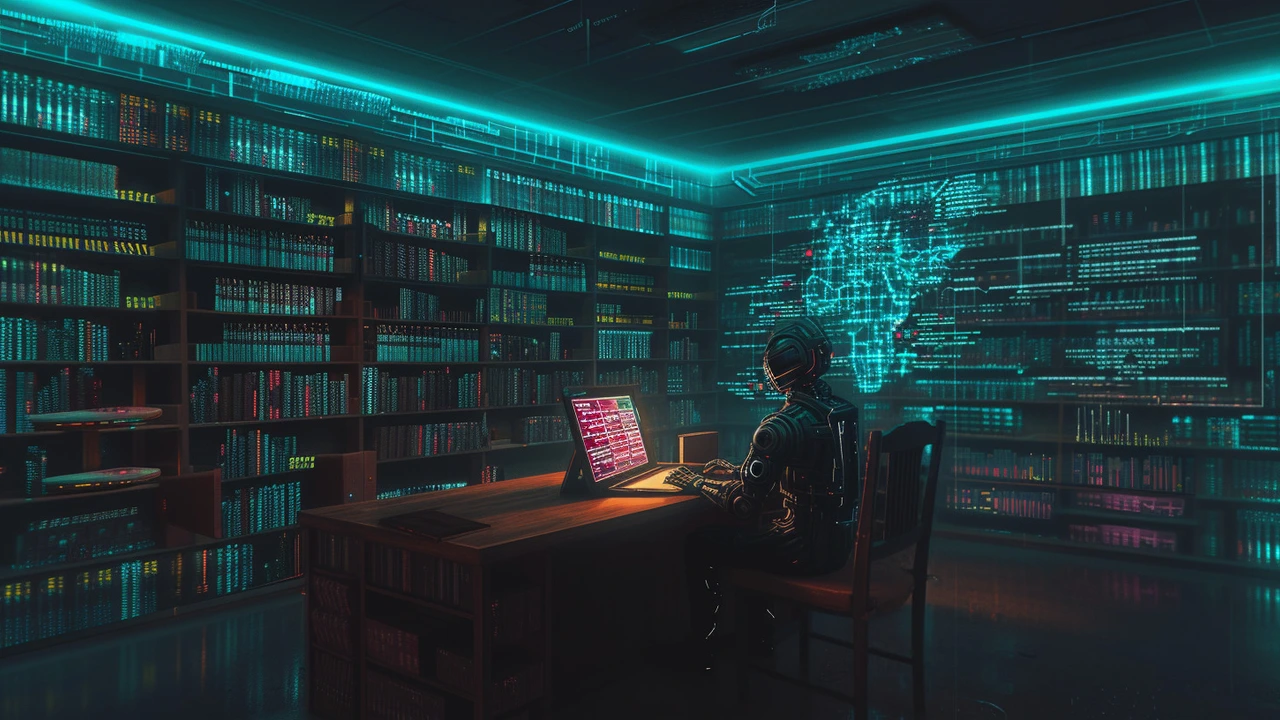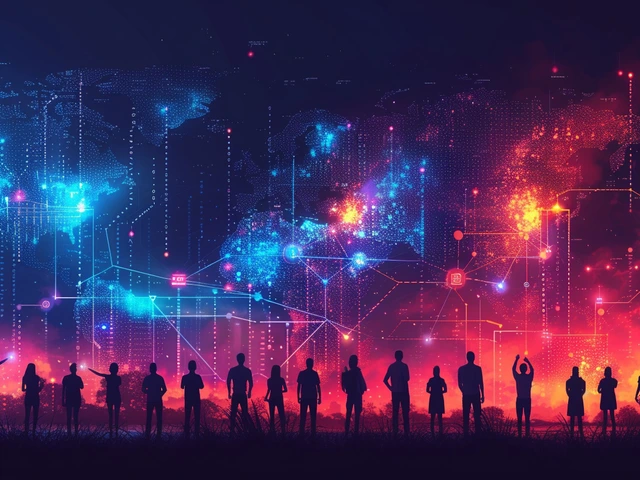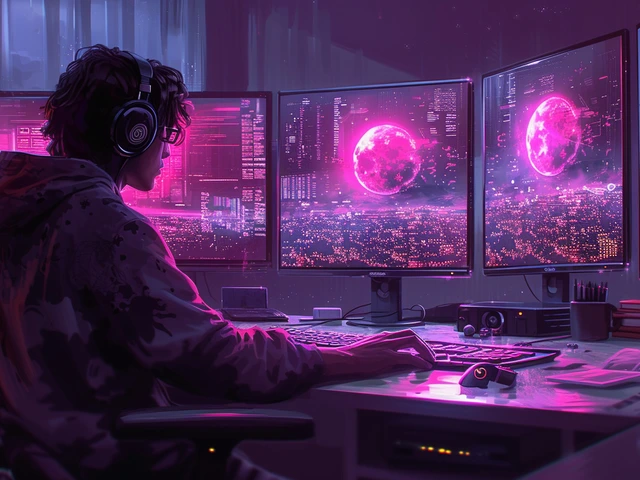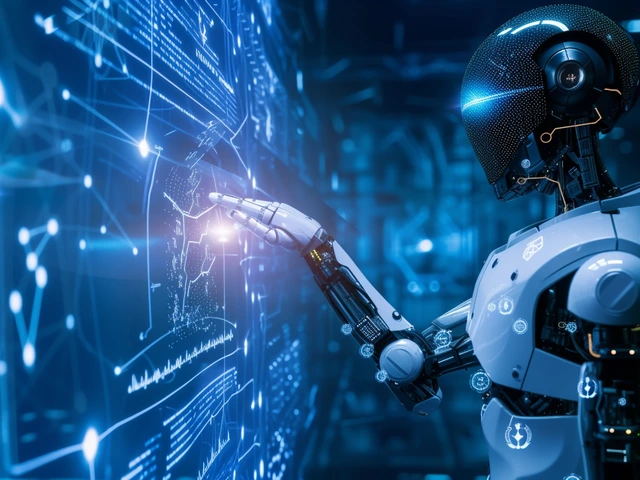Dec
28

- by Miranda Fairchild
- 0 Comments
Demystifying Python's Role in AI
Have you ever wondered what the secret ingredient is behind the most innovative AI projects out there? Let me spill the tea: it's an intriguing and flexible programming language known as Python. Why Python, you ask? Imagine you're baking the most fabulous cake (I do love a good baking analogy). You've got all these brilliant, high-quality ingredients, but to make everything come together, you need something that binds them, something that makes the flavors harmonize. That's Python in the world of AI. It's easy to learn, which means no endless nights with bloodshot eyes trying to decipher hieroglyphic-like codes. Trust me, I've been there, and it's not a pretty sight! Python's syntax is straightforward and almost English-like, which is why many beginners and pros alike default to it for their AI concoctions.
The Dynamic Duo: Python and AI Libraries
Nothing screams 'power couple' more than Python and its libraries when it comes to AI. Take TensorFlow and PyTorch, for instance. But let's put the techie talk aside for a sec. Imagine you're painting a masterpiece. Your brushes and paints are like Python libraries—without them, your canvas would just be… well, a canvas. These libraries are like adding superpowers to your toolkit, from machine learning to data analysis and beyond. They’re the Robin to your Batman in the AI journey. They turn complex tasks like neural network construction or natural language processing from a hair-pulling ordeal into a walk in the park. And who doesn't like a nice, relaxing walk in the park, am I right?
Real-World Applications: Python Making a Difference
Let's talk about real-world applications because what's the point of all this tech wizardry if it doesn't make life a bit more peachy? Python is the MVP in fields like healthcare, finance, and transportation. It powers chatbots that can handle your customer service blues, financial algorithms capable of predicting stock market trends, and self-driving cars that (hopefully) know where they're going better than I do! It's pretty amazing when you think about it. It's like your code coming to life and making a real splash in the world—like a pint-sized robot butler who doesn't just exist to serve, but also to solve actual problems. That’s Python for you, a little digital superhero in the making.
The Merging of Neural Networks and Python
Talking about neural networks without mentioning Python would be like trying to make a smoothie without a blender—messy and borderline impossible. These networks are the brainchildren behind image recognition, speech transcription, and even beating humans at chess—ouch for our pride, but yay for progress! Now, thanks to TensorFlow and Keras, Python lets you shape these neural networks like a digital sculptor. You just choose your layers, set up your neurons (no neuroscience degree needed, I promise!), and voila! Here's the fun part: you can tweak and play with your models just like you'd tweak a recipe to get that perfect chocolate chip cookie. Crisp on the edges, gooey in the middle—perfection!
Why Python and Not Other Languages?
Okay, let's address the elephant in the room: why choose Python when there are other programming languages strutting around, flashing their features? I'll tell you why: community and support. Python has one of the largest, most vibrant communities out there. It’s like being part of a never-ending tech party where everyone wants to help you out. Plus, there’s a Python package for almost anything you can think of. Want to process images? Python’s got you. What about crunching some numbers? Python says, "hold my beer." It's like having a Swiss army knife in your digital toolbox. Also, Python has this knack for playing nice with other languages, so it’s not the jealous type—it’s all about teaming up for the greater good.
AI + Python: Education and Resources
So you're feeling pumped about jumping into the AI and Python world, and you’re ready to hit the books — or, more likely, the online tutorials. Here's the good news: resources are as abundant as cat videos on the internet. There are online courses that spoon-feed you Python like it's a delightful dessert—delicious and easily digestible. Got a question? Just pop it into a forum and you'll get so many answers you won't even know where to start. Plus, if you're a bookworm, there are more books on Python and AI than there are flavors of ice cream, and that says a lot because have you seen an ice cream menu lately? It's like War and Peace.
Debating Python's Future in AI
Some might say that AI's rapid advancements could outgrow Python, but I beg to differ. With Python's continual development and adaptability, it’s more like it's riding the AI wave rather than being swallowed by it. It's the kind of language that doesn’t just get comfortable and stagnate; it evolves, it reinvents itself. It’s the Madonna of programming languages, always finding new ways to stay relevant. Can you imagine the Python community just sitting on their laurels while others pass them by? No way, José! They’re busy being the awesome innovators they are, ensuring Python stays as essential to AI as avocado is to toast.
When AI Projects Go Wrong: Learning from Mistakes
It's not all sunshine and rainbows, though. Even with Python, AI projects can take a hilariously wrong turn. I remember working on an image recognition project that started identifying all round objects as bagels. Yes, the universe was apparently filled with bagels according to my AI! But, mistakes like these are part of the journey, and Python’s forgiving nature makes the debugging process less of a nightmare. It's kinda like baking—sometimes you need a few botched cakes to appreciate the masterpiece that is a well-baked soufflé. So, embrace the oopsies, learn from them, and keep coding. Our AI overlords will thank us later.
The Fun Side of Python in AI
Now, let’s not forget that this adventure can actually be a rip-roaring good time! With Python, you can have your AI do some pretty quirky stuff. Want to create a poetry-writing bot that’s as emo as a teenager listening to My Chemical Romance for the first time? Go for it. How about an AI that generates new recipes, except it doesn't understand the concept of too much garlic? It's all possible! Let your imagination run wild, let those creative flags fly high, and dive into the fantastical world where Python and AI meet. Who knows, the next viral sensation might just be your creation. Python is the enabler of fun in a field that can often feel like an endless loop of algorithms and data sets. Embrace that fun!






Write a comment